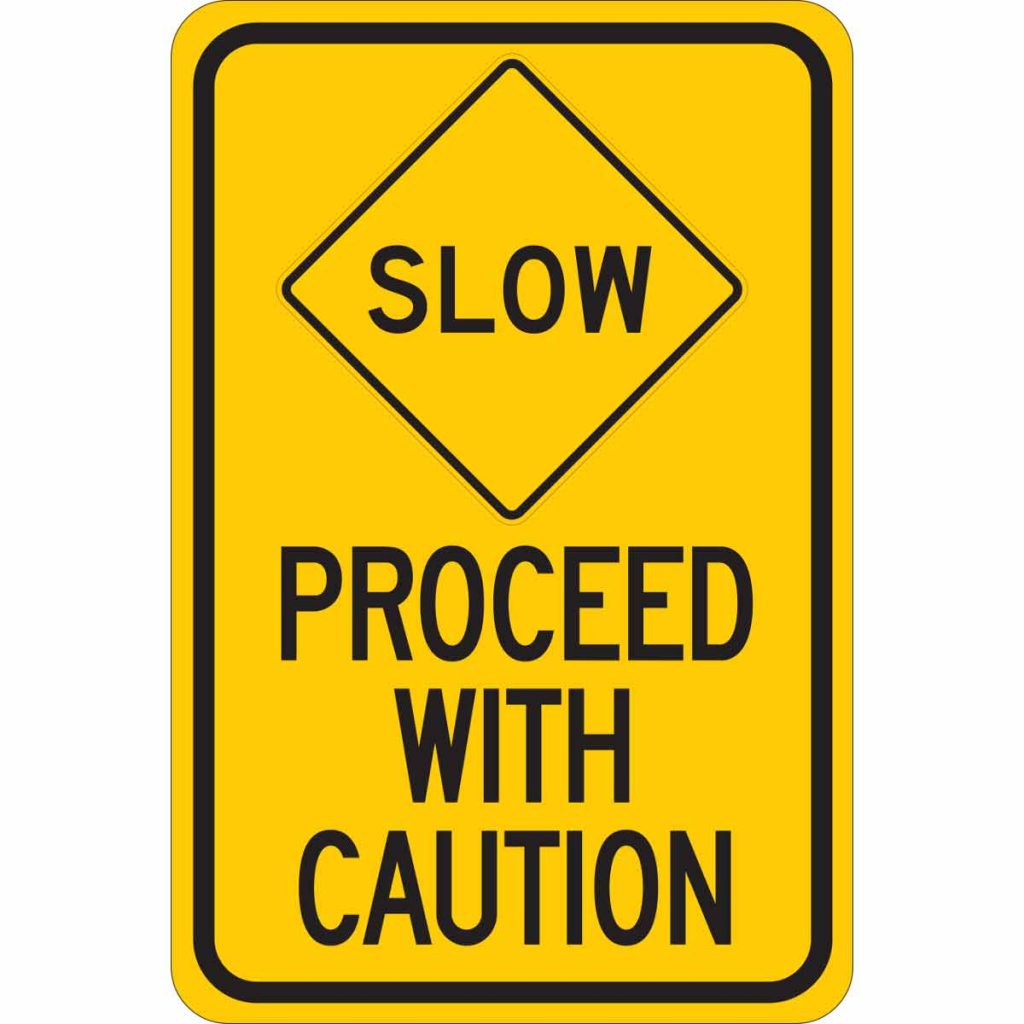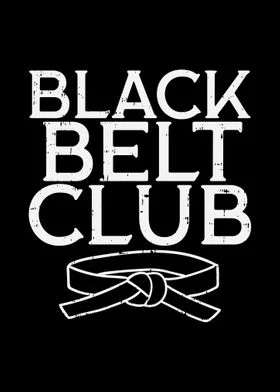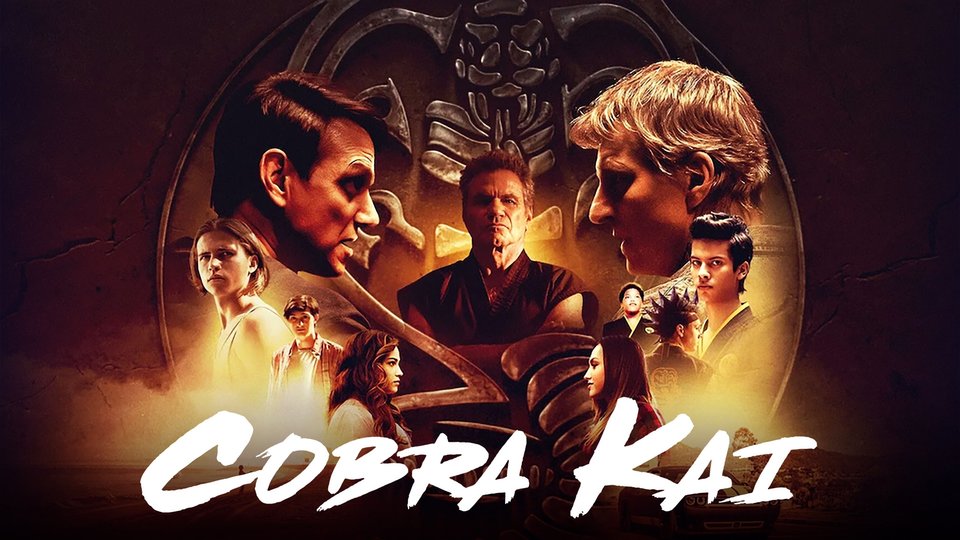
A number of years ago I developed a series of ten free reports on the martial arts and made them available for download via our web subscription system. They’ve been pretty popular. Since I wrote those reports I’ve received a lot of feedback and spoken to a lot of people; students, ex-students, parents of students, other instructors and so on.
This blog post is a distillation of those conversations and my own experiences in the martial arts over the past 40 + years. I figured the information included in it is important enough to warrant the time and effort it took to write. I love the martial arts, pure and simple. The positive effects that the discipline and training has had on my life, the friends I’ve made, the experiences I’ve had all make me the person I am today. And you know what? I can look myself in the eye (in a mirror obviously) and I know there’s very little of the journey that I would change.
Sadly, not everyone has the same positive experiences. If this blog in any way prevents you having a negative experience in the martial arts, and helps you to find the right instructor and the right school, then I consider my mission accomplished. And I mean that, even if you live on the other side of the world and we never meet, I am still happy. If you join another school, I am still happy. Why? Because the martial arts have the power to enrich lives and I believe that is to be shared in whatever small way possible.
The Mistakes
With the huge growth of Mixed Martial Arts over the last few decades, more and more Australians are joining martial arts schools and becoming part of this virtual explosion. With the global success of the UFC it is not uncommon for UFC veterans and UFC champions to be household names. Rising from obscurity and almost total banning just ten years ago, mixed martial arts is now the fastest growing professional sport in the world!
To add to this global UFC/MMA phenomenon the martial arts in general now have a proven track record of helping people to improve their lives over a variety of key areas. The positive psychosocial benefits of martial arts have been demonstrated time and time again with a variety of peer reviewed studies and this information has entered popular culture and has seen the popularity of martial arts increase rapidly over the past few years. It has also seen the type of person training change: from the archetypal ‘angry young man’ of the early days, it went through a cycle of being mostly children in the 90’s through to a popular activity for people of all ages today.
Consequently, martial arts schools are becoming more prevalent with new ones opening up all the time. Many people are joining schools that may not be the right fit for their particular needs. Therefore, what follows is what I have determined in over forty years in this industry, to be the ten biggest mistakes people make when choosing a school. They are detailed below in no particular order.
It must be noted that the martial arts and combat sports (they are different) are a largely unregulated industry. There are all sorts of claims being made by all sorts of people: claims ranging from the ridiculous to the sublime; from harmless to outright dangerous. Dodgy schools are now so common there’s even a term for them – McDojo’s. In turn this has even spawned a spoof Indie internet based TV series called Enter the Dojo, featuring the mythical ‘Master Ken’, his system ‘Ameri-Do-Te’ and his well meaning but clueless students. When I watch Master Ken’s antics I both laugh and cringe, as I have met many instructors like him over the years, and sadly, I am likely to meet many more.
So how is the student, or prospective student, to navigate through the hype and find a decent school? Let’s look at what not to do, to work out what you can do better.
Mistake Number One: Basing Your Decision on Price Alone

The old adage you get what you pay for, unambiguously does not apply to martial arts training. Pricing in this industry varies enormously, as does the quality of the products and services being delivered. Even today I see schools that charge as little as $40 per month to in excess of $500 per month. Like all products and services, price does not necessarily equate to value. The most important factor to consider with respect to price is the value that you will be getting. It is therefore imperative that you compare apples to apples when looking at selecting a martial arts school for you or your family.
Some factors to keep in mind are the level of instruction, the quality of the training, the qualifications of the instructors, the experience of the instructors, the facility itself, the amount of classes per week offered with each membership, the equipment utilised, the availability of classes, the flexibility of the timetable, the teacher/student ratio, and other costs outside of membership fees.
Naturally you should choose a school that you could afford, but more importantly the best value for your budget. Don’t choose a school because it is the cheapest. Good instructors, like all professionals will demand, and are entitled to, a greater wage. You wouldn’t choose a heart surgeon because he or she is the cheapest. Many of the less expensive schools don’t offer much in terms of the facility or the quality of the instruction.
Good facilities also cost more; therefore a full time school needs to charge more than a class running out of a community centre. It is also likely to last longer if it is run professionally.
Likewise, don’t choose a school simply because it’s more expensive. The assumption here is that the higher price means it must be better. There are many schools that charge a lot of money because they spend excessive amounts on national advertising, cool logos, or simply because they are arrogant and need that money to feed their big egos. At many of those schools the quality of instruction is not nearly as good as some of their competitors who charge a lot less. Often these schools do not stay in business very long. Once again, it is essential that you consider the value you are getting for your hard earned money.
It is a much better idea to base your decision on the value of what is being offered, and you really don’t know the value until you’ve had a chance to thoroughly check the school out. Can you do a few lessons before signing up? Can you watch some classes, or even a belt test? Do they have an introductory program? Are the school and the instructors open and honest, or do they appear to be secretive? Is there ‘pressure’ to sign up now? These could all be considered warning signs that something is not quite right.
How do you measure value? By working out what you want to achieve with the martial arts training. We’ve got another downloadable article here on the positive benefits of martial arts training.
Mistake Number Two: Choosing a School Because it is the Closest to You

Not all schools are created equally. While the closest school may be convenient, it may not be quite what you are looking for. It may be overpriced. It may not be the art that you want to learn. The schedule may not work for you.
At our school we have many students who come from surrounding areas and a number of them travel large distances to train with us, even though there are schools a lot closer. Before you choose a school, visit all of the schools that are near your house or job or kids school.
How far to travel is up to you, but statistically, if you have to travel more than fifteen minutes to get to class, you are a lot more likely to not go on a regular basis. Find a school that is the best fit for you within a reasonable travelling distance.
Mistake Number Three: Not Considering what is Actually Being Taught
Many schools advertise themselves as mixed martial arts or say they teach a particular art and then on closer examination, you realise the classes look nothing like what you were expecting. Almost every good school offers at least one trial class, and many schools offer a trial period before joining. Take advantage of this.
Be careful of mixed martial arts (MMA), hybrid martial arts and things that mix and match. Whilst many ‘freestyle’ and mixed martial arts are legitimate, with good instructors and safe curriculums, many more are not.
Ask the instructors what specifically you will learn if becoming a student. If the instructor is unable or unwilling to clearly communicate this information or if it is not what you were looking for, it is probably not a good idea to join. Like any activity, before joining do your research and ask questions.
This has been made much easier by the internet and the power of search engines like Google. For example, if the ‘history’ of the school refers to “5000 years of lineage back to the Buddhist monks of some fabled land” then check out the age of the oldest known monasteries – these are far younger than 5000 years. If they are lying about that, what else are they hiding?

Likewise, if a school has a very heavy emphasis on competition or sport, then it is likely to be a combat sport, not a martial art. Whilst some very good schools do both, many do not and even some instructors don’t realise that combat sports and martial arts are different. Once upon a time they were not. Now, in the era of corporate sponsors and TV rights, they most definitely are.
Combat sports have rules, regulations, sanctioning bodies, funding and referees. Martial arts do not, as they were originally designed for self defence or use on the battlefield. Are martial arts better than combat sports? That depends on what your goals are. Different martial arts do the same things, but different ways. Much of the value and benefits lay within the individual school and instructor, not the ‘style’ or ‘system’ or ‘art’.
Just remember that Muay Thai is a combat sport. The martial art it came from is called Muay Boran. Likewise Judo is a combat sport. The martial art it came from is JiuJitsu. Where it gets confusing is when you have things like ‘Karate’. Karate is both a sport and a martial art, and some people join sport schools to learn self defence never realising that they are only learning the sporting application, sadly until it’s too late and there’s no referee.
So what’s the solution? Firstly, work out what you want to achieve. Think about it logically and rationally, and maybe even a little cynically. Do your research online and don’t be in too much of a hurry. Determine what your specific goals are and which martial art suits your needs best. Determine which martial art or arts you want to learn and then find a school that offers training in those areas. If you are not sure what to study, visit a variety of schools. Talk to the staff, the students, the students families and the instructors. Find out how any particular school will benefit you and get you closer to your goals. Many people join a school because it seems popular and then realise what they are learning is totally impractical. If your goal is realistic self defence, find a school that caters to that need. If you want a school where you will get in great shape, don’t just read the word “fitness” in the advertisement and assume it will be a good work out. Thoroughly check out the program and the curriculum of a school you are considering. Consider the school, the facilities and the qualifications of the instructors, then evaluate if it is right for you.
Remember, there’s no standard definition in the industry of what is meant by ‘fitness’ or ‘self defence’.
Mistake Number Four: Failure to Evaluate the Instructors and the Staff

Most martial arts instructors are, and should be, professionals. You are trusting them with your health and safety or the health and safety of those you love. Everything about them should be professional. Do not be afraid to ask questions. One main factor to consider is the instructor’s background. Do not be confused because someone tells you they are a high ranking Black Belt or be impressed because there are trophies around. In some organizations Black Belts are handed out after a very short period of time and a low level of competency. It is important to know that there is no central standard or sanctioning body anywhere for the issuance of Black Belts and so the standard can vary wildly from school to school – even in schools that share the same ‘style’ like karate or kung fu.
Many schools put trophies everywhere to make up for a lack of competence. There are tournaments every weekend where there are more trophies than participants, so do not be impressed by a large amount of them. Some tournaments also give out participation trophies in keeping with the philosophy of ‘not keeping score’ in children’s sport so no one gets disappointed. This further muddies the water.
Make sure the instructors are qualified to teach. Ask them how long they have been training? What is the instructor’s level of experience in teaching? Do they hold any formal qualifications? Who were they issued by? What you see is more important than what you are being told. Sadly, being a ‘black belt’ doesn’t necessarily mean much anymore as there are no centralised or quality controlled standards. There are also lots of very shady people running around claiming all sorts of ranks and titles that they never earned. There are even associations dedicated to this. The more grandiose the title, the more likely it is to be a little bit ‘off’.

One other warning sign is if the instructor never demonstrates anything themselves or only ever demonstrates on a ‘willing’ student or other ‘safe’ person. Does the instructor have skills themselves, or are they using hired staff to build themselves up? An instructor should be an expert in what they do, pure and simple.
As a general rule, if the instructor is telling you that you will get in great shape by becoming a member, but he or she is overweight, then there is no credibility in that school. If the instructor tells you that martial arts will improve your health, and he or she is a smoker, drug user, or abuser of alcohol, then the instructor clearly doesn’t lead by example. Instructors should, first and foremost, practice what they preach. Consider not just what the instructor tells you, but what you can clearly observe.
If the school claims to teach fitness based programs, does the instructor hold formal coaching or personal training qualifications? Do they do pre-enrolment health testing or questionnaires? If not, how to they ensure that what they are asking students to do will not exacerbate an underlying medical condition or cause injury? Ask questions.
Do your best to determine the instructor overall. Is he or she intelligent, friendly, professional, articulate, competent, and proficient in the arts they claim to teach? Is this a person you would feel comfortable working with? Does this person practice what they preach?

Consider these questions too:
- If this is a self defence school, why do students have to compete in tournaments?
- Are tournaments compulsory?
- Does the school and its staff ‘put down’ other martial arts to talk themselves up?
- What is their policy relating to training when injured? Or, more importantly, preventing injuries in training?
- Does the instructor talk in absolutes? For example “This technique is guaranteed to work against any attacker” or “this martial arts is superior to all others”. This type of talk is a definite red flag.
- Is the instructor a bully? How do they treat their students?
- Do the students seem afraid of the instructor, or simply respectful?
- Do students progress based on skills attained, or lessons attended?
Mistake Number Five: Not Taking a Hard Look at the Facility and Equipment.

One of the most important factors to consider when choosing a school is looking at the facility itself. If someone is asking you to pay a considerable amount of money, the place should not beshabby, smelly or run down; it should be clean, tidy not smell bad. The equipment should be cared for and in good working order and there should be a safe, relatively comfortable waiting area for guests, visitors, and parents.
Be wary of schools that don’t allow visitors and spectators, and especially wary of those who don’t allow parents to stay and watch their children. Schools that don’t allow this are not necessarily bad, but examine any rationalisations carefully for truth and validity.
There should be readily accessible toilets which offer privacy and are appropriate for the child/adult mix. Remember that showers mean the possibility of naked adults showering during times when children are present. How is this controlled? What policies, procedures and safeguards are there to protect children? Professional schools have this covered.

If the school looks or smells bad it is generally indicative of overall neglect, sloppiness and poor infection control. I certainly would not want to train in this type of environment. Does the school have an infection control policy? If not, what’s protecting you from the nasty viral, bacterial and fungal infections that thrive on sweat and human contact? How are the mats cleaned and how often? Do a Google search for “staph infection” and check out the images (unless you have a weak stomach). Do they share sparring equipment? If yes, how are they preventing potential cross contamination for fungal infections like ringworm, viral infections like herpes gladiatorum, for bacterial infections like Staphylococcus Aureus (remember the Google search?)?
Different arts do things different ways. For example Wing Chin Kung Fu uses a wooden dummy, most other arts do not. Some traditional Karate styles use makiwara (punching posts) but most other schools do not. If you see something you don’t understand, ask questions. Keep and open mind as the martial arts are hugely diverse in their ‘styles’, philosophies and applications. That being said, they are also obligated to make sure everyone knows the risks of what they are doing, and to provide professional instruction.
In grappling arts or in facilities with concrete floors (very common in our area) there should be adequate mats down. I have seen some schools that claim to teach grappling, throws and ground work that don’t even have mats! Nobody in their right mind would want to get thrown, or roll around on a hard wooden floor. In this day and age, such practices are not only foolhardy, they are probably negligent.
Everything about the school should say professionalism. Lastly consider what amenities the school offers. Is there a place for parents to relax and observe classes. Some schools have a large, comfortable waiting area with flat screen TV’s and drink / snack machines, whilst other schools don’t let parents and guests stay and watch. Determine what is important for you. Is it comfortable and safe for younger siblings and the elderly? Is it easy to get to and in a good neighbourhood? Make sure you consider what services are important to you.
If you are paying $5 a class, then you can’t reasonably expect much.
Mistake Number Six: Not Reading the Fine Print

It is advisable to take advantage of any ‘free lessons’ or short term trial programs prior to enrolment, although you must ensure that you read the fine print! Whilst the old ‘bait and switch’ type marketing is illegal and is no longer that common, it can still happen and it is better to avoid it where possible. Good martial arts schools, like all good businesses, run transparent and professional operations where a fair price is charged for the delivery of a pre-agreed service or goods, which are fit for the purpose advertised and/or described.

Martial arts schools are businesses and their owners are in business to make a living; and deservedly so. Schools that charge cash fees on a per month or per week basis tend to have shorter lives in today’s climate and tend to open and close more often – although there are some ‘club’ type schools that have been running successfully this way for decades and are very professional. Most schools now require payment either on a ‘per term’ (as in school term) or on a periodical direct debit agreement using a 3rd party direct debit company. This helps the school to budget their cash flow and operate professionally and efficiently and is not necessarily a bad thing. Well managed businesses survive to train their students.
It is important though as a consumer (a.k.a. student, member, customer etc) to make sure that you investigate the costs thoroughly and make sure that you know all costs up front. Some schools have a lot of ‘hidden’ fees like compulsory ‘seminars’ or ‘camps’ that are in addition to normal fees. There is also the cost of training and sparring equipment, uniforms and belt tests. Ask before you sign up for anything.
Professional schools will provide you with all the information you need to make an informed decision.
Who knows what 5 year old little Johnny is going to want to do next year? Certainly not little Johnny! Consider the wisdom of signing up for long term contracts. Some schools lock people in to 3, 4 and 5 year “Black Belt” agreements that are pretty hard to get out of once you’ve committed. Whether it’s called a “Black Belt Agreement”, “Masters Club” or any other name, it is by definition a contract. It is always advisable to read it and get advice before signing anything.
Mistake Number Seven: Not Checking if the Instructors & Staff have met Legislated Background Checks
Background checking of people working with children is taken for granted these days but it should not be. Even though the law requires people working with children to have these checks done, there is not necessarily anyone checking to see if they have done so.

Don’t be afraid to ask if they have been done and can you see the certificate or other ‘suitability notice’ showing that the person is legally allowed to work with children. Predators who take advantage of children can show up in any walk of life. In the past there have been doctors, lawyers, judges, police and, sadly, martial arts instructors charged with offences against children. Check to ensure your child does not fall prey to this type of predator.

Also check if the school has a child protection policy, and what they do to ensure the safety of their young charges, and whether they comply with Victoria’s child safe standards.
As a further note, if the NDIS is funding the classes, then check that the instructors taking those classes have completed NDIS Worker Suitability screening and ask for a copy of the service agreement.
Mistake Number Eight: Motives for joining Martial Arts

Make certain you join up for the correct motives. Are you joining for self-defence? Do you simply want the exercise? Are you living your childhood dream? Are you living your dream of achieving a black belt vicariously through your children? Before joining answer these questions and determine why you are joining a martial arts school. If you’re joining because of some fictitious means of being a movie star, don’t waste the time and money. Exercise and self-defence are terrific reasons to join martial arts schools and there are a myriad of equally valid physical, emotional and psychological benefits as well.
Just be sure of why you are commencing the martial arts journey before you join.
Mistake Number Nine: Falling for the ‘Big Ad’!
There is no positive correlation between the quality of a martial arts school and its advertising. A large marketing budget has no relationship to the quality of the martial art on offer except that, in fact, mostly the quality of the martial art may actually be in inverse proportion to the marketing. Martial arts schools not only compete with other martial arts schools but also with every other leisure activity on offer. Hence, to survive they need to be aggressive marketers. Some take the fitness industry model where, like gyms, they are actually not as concerned with a continuously rising membership as that’d strain their resources; both having the staff trained to instruct and in terms of training space. These schools work mostly on throughput; the number of people constantly joining for a short period then dropping out (even better if they are locked in to long contracts and have to keep paying). To maintain throughput they have to continuously market to attract the numbers.
Big ads can mean a good school, but so can a small ad. There are simply too many variables to judge based on an ad alone. A big advertising budget tells you that the school has a focus on their business expansion; it says nothing about their quality of instruction. Always try before you buy and do your research.
Mistake Number Ten: False Promises
Are you being told that you will be able to defend yourself against a crazed knife-wielding attacker within just three months in their program? Are you being told that it is possible to get your black belt in just over a year? Or even in two years?
Unfortunately claims like these are relatively common and there is a definite correlation; the more outrageous the claims, the lower the quality of the school. It takes many, many hours of training and literally thousands of repetitions of techniques for the ‘average’ person to develop skill. True skill takes time. A good benchmark is it takes around 500-600 hours of practice to get a good grasp of the basics in most systems, and around 10,000 hours of practice to ‘master’ them. For reference, there’s only 8,736 hours in a year. It takes the ‘average’ person training an average of 3 hours a week 3 ½ to 4 years to get a black belt. Less if they train more, more if they train less.
Another common falsehood involves equipment. Are you asked to purchase expensive full body gear and padding just to engage in a game of touch-tag? Basic sparring does not necessitate full combat gear in the name of “safety,” it necessitates a good instructor, clear rules, appropriate equipment and appropriate guidance and supervision. Nothing more and nothing less.
Summary
Which martial arts school you choose will make a tremendous difference on the experience that you have. Give it careful thought and consideration before making a decision. Do not be afraid to ask lots of questions and take into account all of the factors mentioned. Talk to some of the other students or parents of students. Check out any Facebook pages(s) or other social media too. Is this a positive and supporting environment or elitist, bullying or negative?
With the right school and right instructor, your life will be substantially improved as mine was. I wish you the best of luck!
(C) Damien Martin; Southern Cross Martial Arts
SPECIAL OFFER: TWO Weeks Unlimited Classes + FREE Uniform for Just $39.99 (valued at $65)

